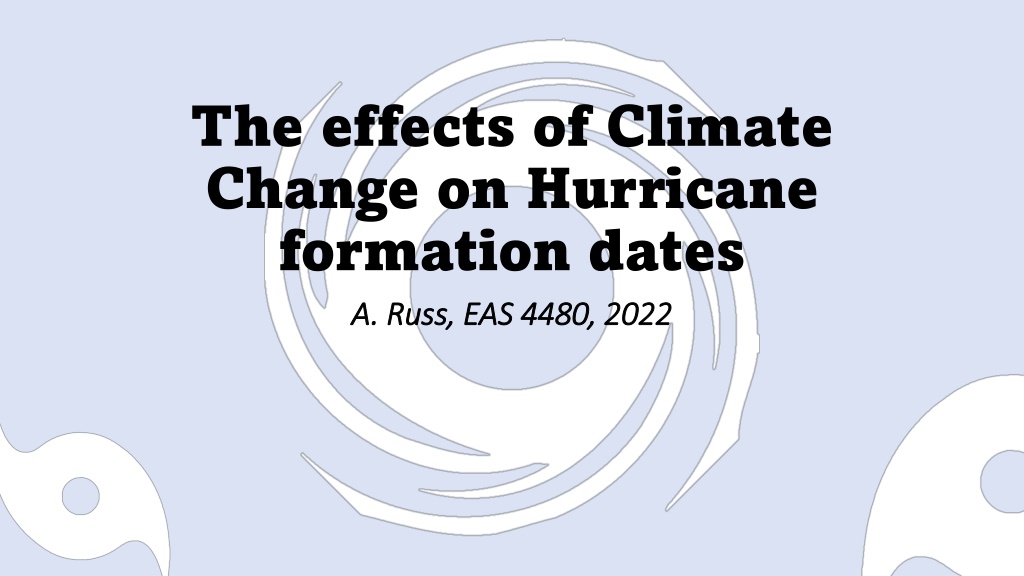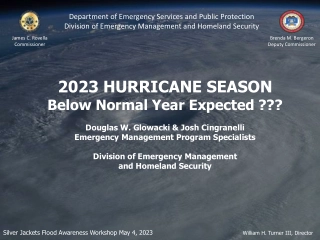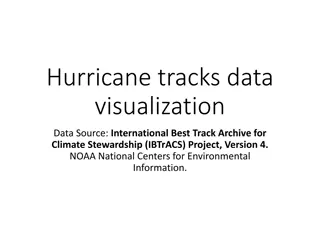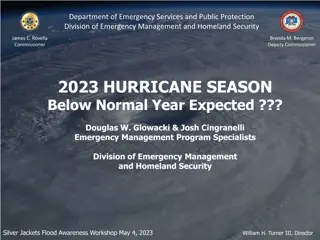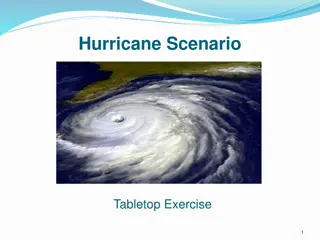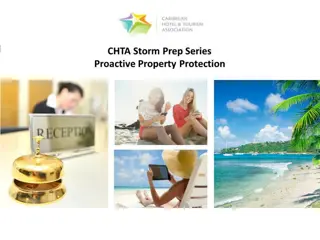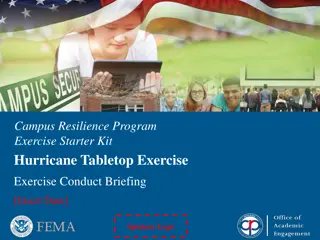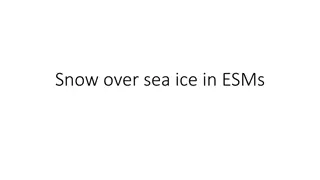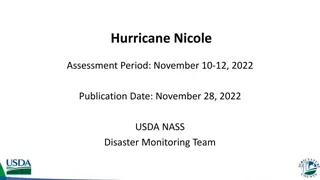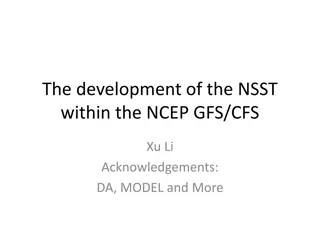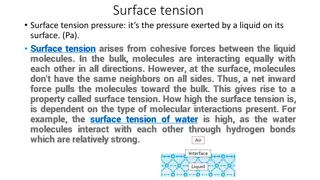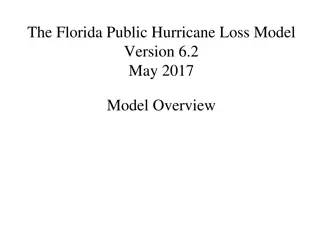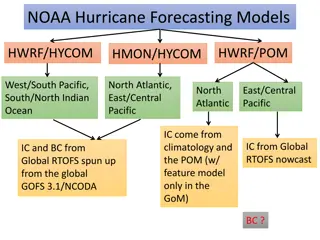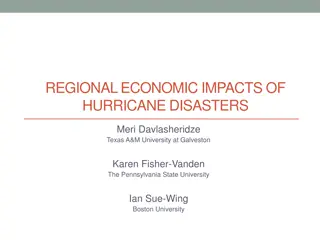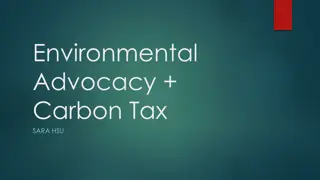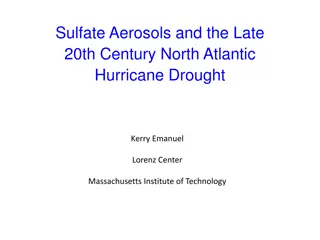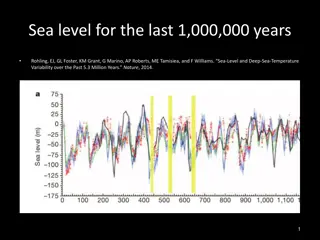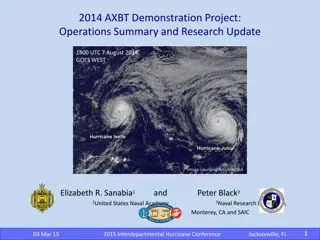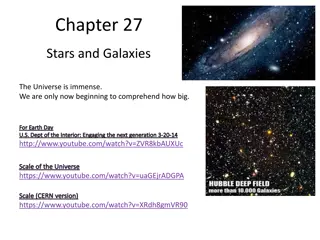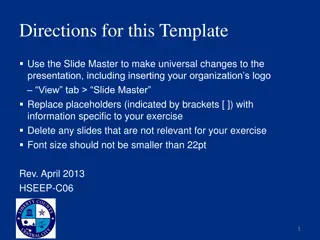Impact of Rising Sea Surface Temperatures on Hurricane Behavior
Investigating the relationship between sea surface temperatures and hurricane behavior, focusing on the potential increase in out-of-season hurricanes with rising average SST. Data analysis from 1970-2020 reveals patterns in hurricane formation dates and categories, supporting the hypothesis of more outlier hurricanes under warmer SST conditions.
Download Presentation

Please find below an Image/Link to download the presentation.
The content on the website is provided AS IS for your information and personal use only. It may not be sold, licensed, or shared on other websites without obtaining consent from the author. Download presentation by click this link. If you encounter any issues during the download, it is possible that the publisher has removed the file from their server.
E N D
Presentation Transcript
The effects of Climate Change on Hurricane formation dates A. Russ, EAS 4480, 2022 A. Russ, EAS 4480, 2022
The Question - -As sea surface temperatures rise, how will this effect hurricane behavior? As sea surface temperatures rise, how will this effect hurricane behavior? Specifically, will out Specifically, will out- -of of- -season hurricanes become more common? season hurricanes become more common? - -My hypothesis is, as the average SST rises, we will see an increase in outlier My hypothesis is, as the average SST rises, we will see an increase in outlier hurricanes (hurricanes formed before July and after October). hurricanes (hurricanes formed before July and after October).
The Data - -Using the NWS archives, I recorded for every hurricane formed from 1970 Using the NWS archives, I recorded for every hurricane formed from 1970- - 2020 it s month of formation and category classification (from 0 2020 it s month of formation and category classification (from 0- -5) 5) - -Due to the shear amount, I ended up only using every other year Due to the shear amount, I ended up only using every other year - -Resulted in 936 data points for the 26 years of collection in the form of year, Resulted in 936 data points for the 26 years of collection in the form of year, month (1 month (1- -12) and category (0 12) and category (0- -5) for the hurricanes that were recorded 5) for the hurricanes that were recorded
Hurricane months DECADE MEAN MONTH STANDARD DEVIATION 1970-80 8.320 1.570 1980-90 8.551 1.292 1990-2000 8.873 1.263 2000-10 8.591 1.103 2010-20 8.138 1.713
First and Last decade DECADE MEAN MONTH STANDARD DEVIATION 1970-80 8.320 1.570 2010-20 8.138 1.713
Change in Mean? - -Null Hypothesis: The value hurricane month formations between the first and fifth decade Null Hypothesis: The value hurricane month formations between the first and fifth decade have equivalent means. have equivalent means. - -Using paired Using paired- -sample t statistically equivalent. statistically equivalent. tstat tstat = 0.905 p = 0.368 p = 0.368 ci = [ ci = [- -0.218,0.582] h = 0 (meaning our Null Hypothesis is true) h = 0 (meaning our Null Hypothesis is true) sample t- -test on the data from 1970 test on the data from 1970- -80 and 2010 80 and 2010- -20, their means are 20, their means are = 0.905 0.218,0.582]
Change in Variance? - -Null Hypothesis: The value hurricane month formations between the first and fifth decade Null Hypothesis: The value hurricane month formations between the first and fifth decade have equivalent variances. have equivalent variances. - -Using two Using two- -sample f statistically equivalent. statistically equivalent. fstat fstat = 0.84 p = 0.5133 p = 0.5133 ci = [0.518,1.41] ci = [0.518,1.41] h = 0 (meaning our Null Hypothesis is true) h = 0 (meaning our Null Hypothesis is true) sample f- -test on the data from 1970 test on the data from 1970- -80 and 2010 80 and 2010- -20, their variances are 20, their variances are = 0.84
Results - -There is no statistically significant effect of climate change on what time There is no statistically significant effect of climate change on what time hurricanes are forming hurricanes are forming - -While there is an increase in frequency, they still form within the expected While there is an increase in frequency, they still form within the expected timeframe timeframe - -So? While we can expect more active seasons, there is no reason to think out So? While we can expect more active seasons, there is no reason to think out- -of of- - season activity is increasing. season activity is increasing.
Moving Forward - -Look into severity changes over time Look into severity changes over time - -The category data was recorded and processed, but for the sake of brevity, it was The category data was recorded and processed, but for the sake of brevity, it was not included in this presentation not included in this presentation
Sources - https://www.nhc.noaa.gov/data/ https://www.nhc.noaa.gov/data/ - National Hurricane Center s data base National Hurricane Center s data base - https://www.mathworks.com/help/ https://www.mathworks.com/help/ - Mathworks Mathworks MATLAB Help center MATLAB Help center
